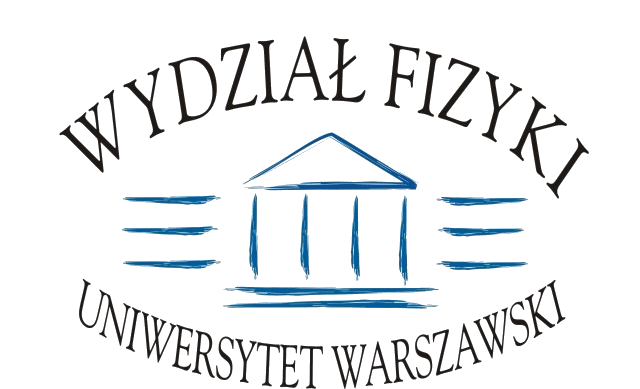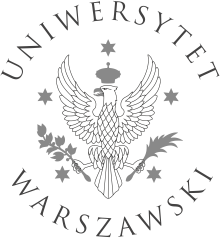Seminarium Kosmologia i Fizyka Cząstek
2006/2007 | 2007/2008 | 2008/2009 | 2009/2010 | 2010/2011 | 2011/2012 | 2012/2013 | 2013/2014 | 2014/2015 | 2015/2016 | 2016/2017
2017-03-07 (Wtorek)
Paweł Kozów (IFT UW)
Scalar dark matter in a classically scale invariant Standard Model
We study the Coleman-Weinberg mechanism of radiative symmetry breaking in a classically scale invariant modification of the Standard Model extended by two, singlet under SM gauge symmetries, scalar fields where one of them plays a role of a stable dark matter particle. The spontaneous symmetry breaking is realized in the Gildener-Weinberg framework. We derive explicit expressions for the vevs and scalar sector masses corrections with respect to the leading formulas and apply the expressions in phenomenological analysis.
2017-02-28 (Wtorek)
Mikołaj Korzyński (CFT, PAN)
Nonlinear effects and coarse-graining in general relativity
I will discuss the nonlinear effects of general relativity which appear if we perform the coarse-graining of the gravitational field and its sources over the fine details of the solution. In particular I will focus on effects of many compact sources of gravitational field and the case of nested inhomogeneities extending over many scales.
2017-01-24 (Wtorek)
Krzysztof Pachucki (IFT UW)
The proton charge radius conundrum
The 2010 measurement of the muonic hydrogen Lamb shift by Pohl and collaborators has questioned our understanding of hydrogenic systems. A significant disagreement with theoretical predictions, which can be interpreted as a discrepancy in the proton charge radius between electronic and muonic measurements has not been resolved till now. A single muonic measurement stands against dozens of electronic hydrogen and electron- proton scattering ones and no simple extension of the Standard Model can fix this. We will argue that the only solution which does not violate the lepton universality is the underestimated uncertainty of all the electronic measurements and it is the muonic hydrogen value which is the correct one. As a consequence this hypothesis will cause a significant changes in fundamental physical constants and I will present all possible means of verifying the new proton charge radius value.
2017-01-17 (Wtorek)
Drazen Glavan (IFT UW)
Observables in cosmological QFT
Some well established concepts and methods of flat space QFT have to be reconsidered in curved space-time, in particular the question of observables. In cosmological context the concept of S-matrix makes little sense (at least for light fields) but yet there is no consensus on what good, gauge-invariant observables should be beyond tree level. I will present results on graviton loop corrections to the propagation of dynamical photons, and to the Coulomb force between point charges in de Sitter space-time. In the end I will discuss preliminary results on a method of addressing gauge dependence of quantum fluctuations in a single scalar inflation model.
2017-01-10 (Wtorek)
Thomas Konstandin (DESY Hamburg)
The effective action as a tool in particle physics and cosmology
Several notable applications of the effective action exist in particle physics and cosmology. First, I will provide an extensive introduction to the basic concepts of effective actions and spontaneous symmetry breaking. Next, I will focus on some topics that have been discussed in the literature recently. These are the resummation of the infrared contributions, issues concerning the gauge-dependence of the effective action and the interplay of these two effects.
2016-12-13 (Wtorek)
Paweł Olszewski (IFT UW)
Scale-invariant scalar potential and quantum effective operators
I will describe a modified version of the dimensional regularization of a classically scale invariant theory, motivated by the requirement to preserve scale invariance at the quantum level. The role of the subtraction scale $\mu$ is played by a dynamic scalar field. This field is assumed to have non-zero VEV thus triggering spontaneous breakdown of the scale symmetry which in turn triggers EWSB. As a consequence, in this approach there is no anomaly associated with the broken scale invariance. On the other hand, the method generates non-polynomial effective operators to the original Lagrangian. Its intriguing consequence is a modification of renormalization group and Callan-Symanzik equations, relative to their form in a similar model regularized in the usual way with $\mu$=constant (field-independent).
2016-12-06 (Wtorek)
Mateusz Duch (IFT UW)
Early kinetic decoupling of dark matter with resonant annihilation
In models with resonantly enhanced dark matter annihilation, the coupling of dark sector to the visible one is suppressed with respect to non-resonant scenarios. Consequently the cross section for scattering of dark matter on light states in the thermal bath is diminished and temperatures of the kinetic and chemical decoupling are similar. Moreover, due to the resonance enhancement, dark matter annihilation cross-section has large temperature dependence and is still effective, even then both sectors are decoupled. This leads to the interesting interplay between dark matter temperature and density. The resulting modifications of dark matter relic abundance will be presented alongside the consequences for direct and indirect detection and dark matter self-interactions.
2016-11-29 (Wtorek)
Zapraszamy do udziału w konferencji "Discrete 2016"
Szczegóły na stronie http://www.fuw.edu.pl/DISCRETE2016
2016-11-22 (Wtorek)
Da Huang (IFT UW)
Direct detection of exothermic dark matter with light mediator
We study the dark matter (DM) direct detection for models with isospin-violating couplings, exothermic scatterings, and/or the lightness of mediator that are proposed to relax the tension between the CDMS-Si signals and null experiments. In the light of the new updates of the LUX and CDMSlite data, we find that many of the previous proposals are now ruled out, including the Ge-phobic exothermic DM model and the Xe-phobic DM one with a light mediator. We also examine the exothermic DM models with a light mediator but without the isospin violation, and we are unable to identify any available region in the parameter space that could simultaneously satisfy all the experiments. The only models that can partially relax the inconsistencies are the Xe-phobic exothermic DM models with or without a light mediator. But even in this case, a large portion of the CDMS-Si regions of interest has been constrained by the LUX and SuperCDMS data.
2016-11-15 (Wtorek)
Tomasz Krajewski (IFT UW)
Cosmological domain walls from Higgs effective potential
Stron 2 z 3






